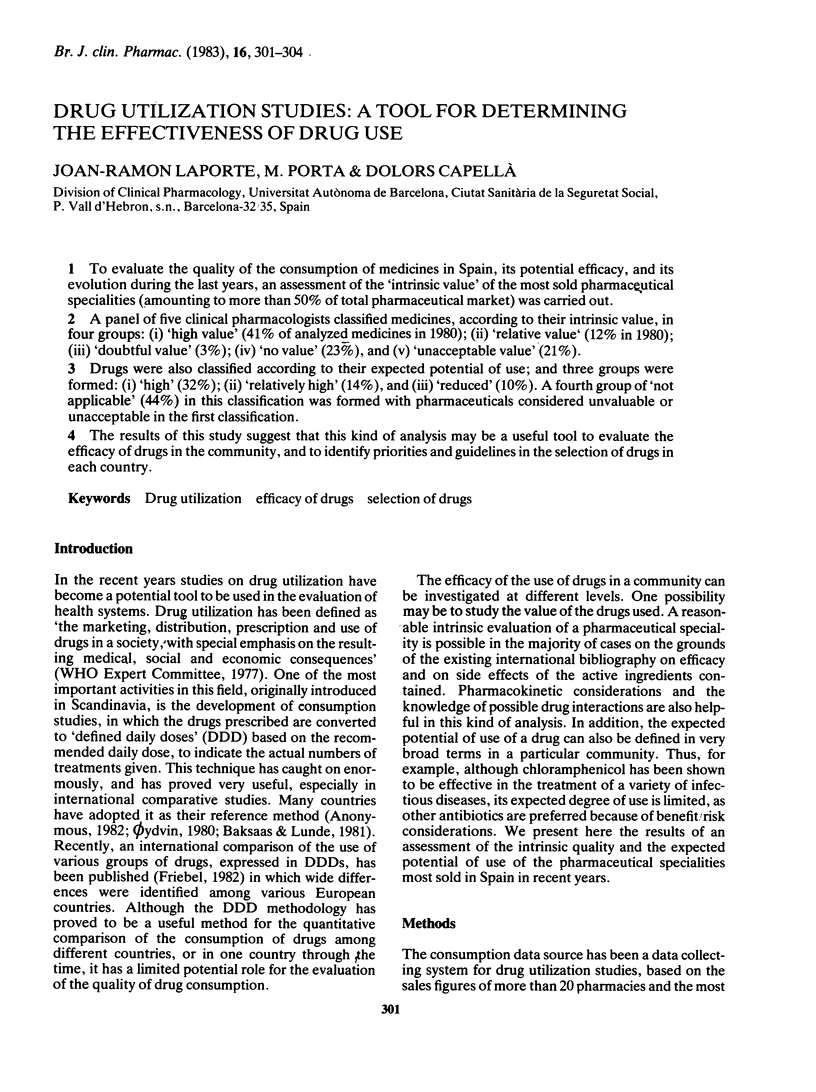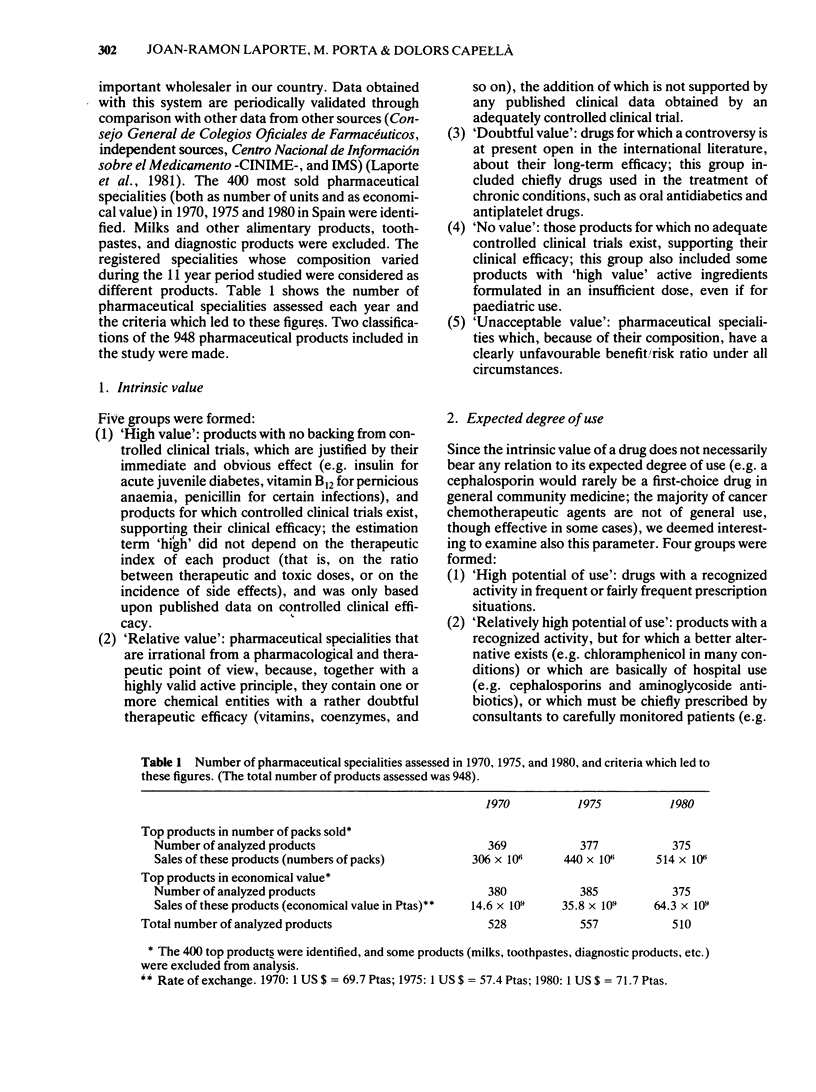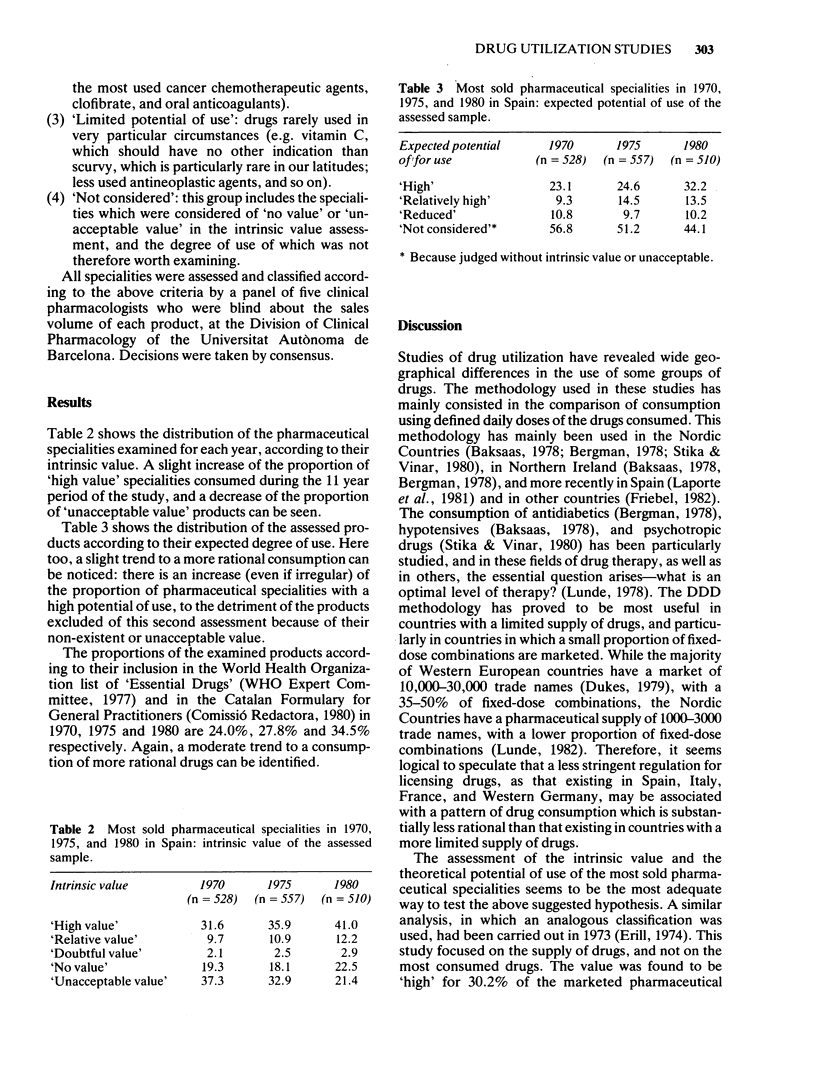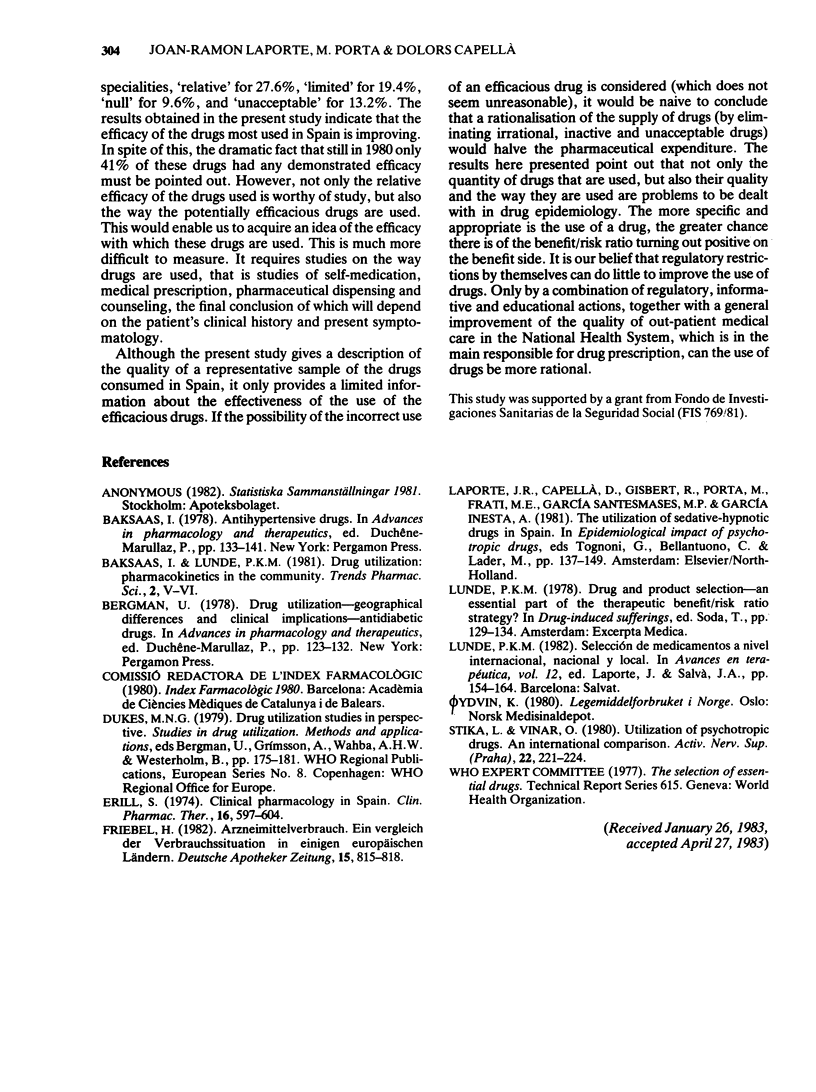Abstract
To evaluate the quality of the consumption of medicines in Spain, its potential efficacy, and its evolution during the last years, an assessment of the 'intrinsic value' of the most sold pharmaceutical specialities (amounting to more than 50% of total pharmaceutical market) was carried out. A panel of five clinical pharmacologist classified medicines, according to their intrinsic value, in four groups: (i) 'high value' (41% of analyzed medicines in 1980); (ii) 'relative value' (12% in 1980); (iii) 'doubtful value' (3%); (iv) 'no value' (23%), and (v) 'unacceptable value' (21%). Drugs were also classified according to their expected potential of use; and three groups were formed: (i) 'high' (32%); (ii) 'relatively high' (14%), and (iii) 'reduced' (10%). A fourth group of 'not applicable' (44%) in this classification was formed with pharmaceuticals considered unvaluable or unacceptable in the first classification. The results of this study suggest that this kind of analysis may be a useful tool to evaluate the efficacy of drugs in the community, and to identify priorities and guidelines in the selection of drugs in each country.
Full text
PDF



Selected References
These references are in PubMed. This may not be the complete list of references from this article.
- Erill S. Clinical pharmacology in Spain. Clin Pharmacol Ther. 1974 Sep;16(3):597–604. doi: 10.1002/cpt1974163part2597. [DOI] [PubMed] [Google Scholar]


